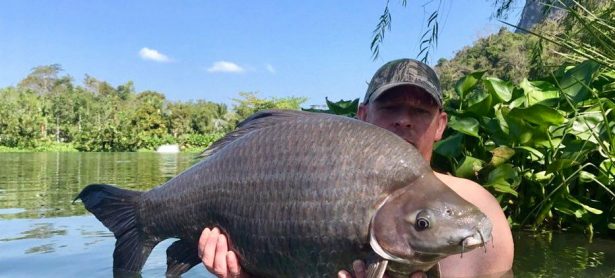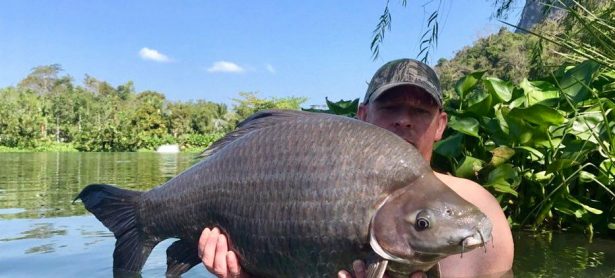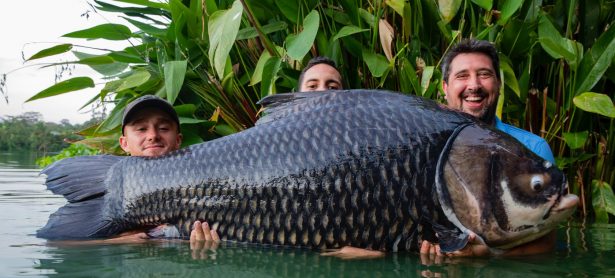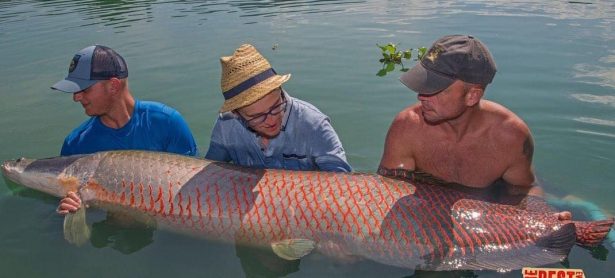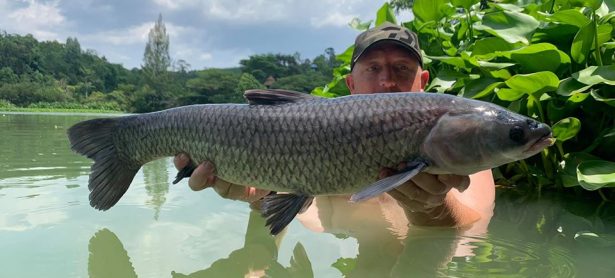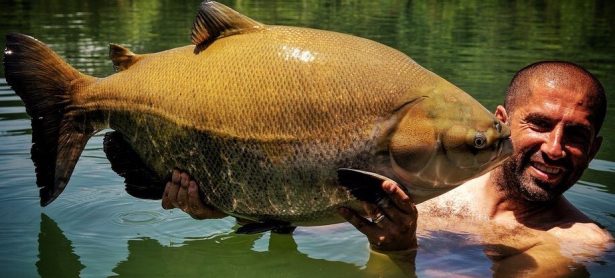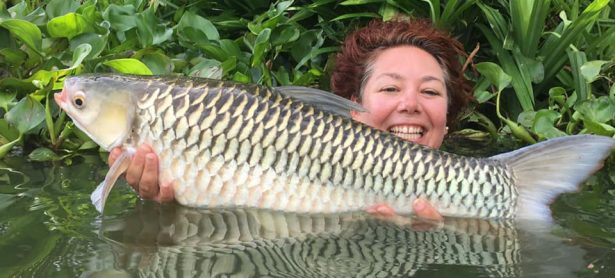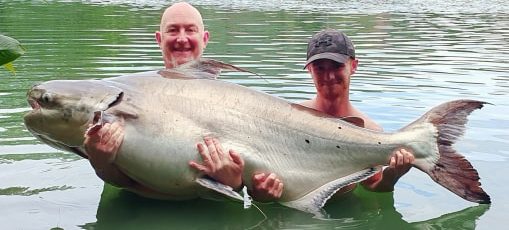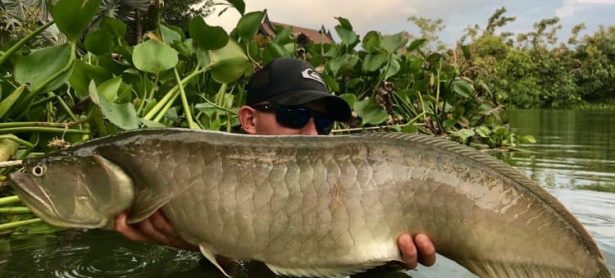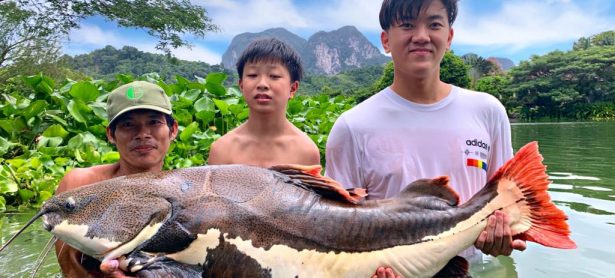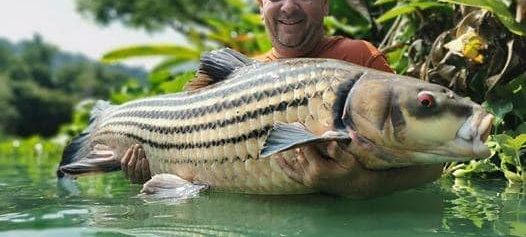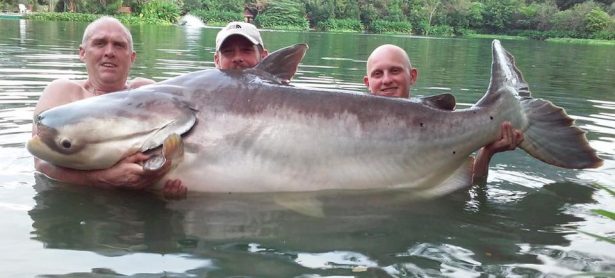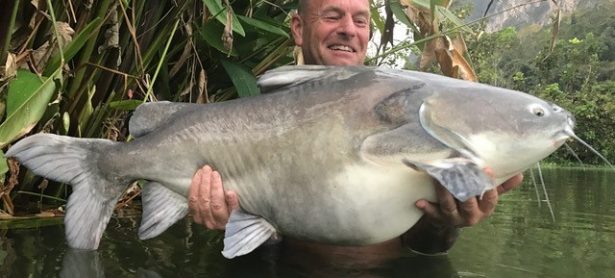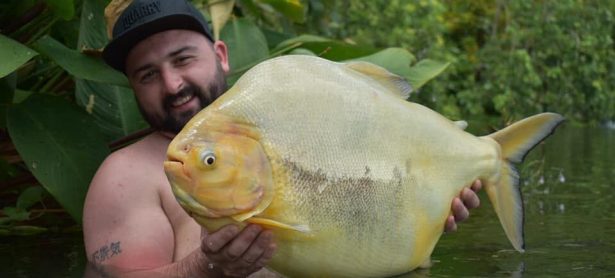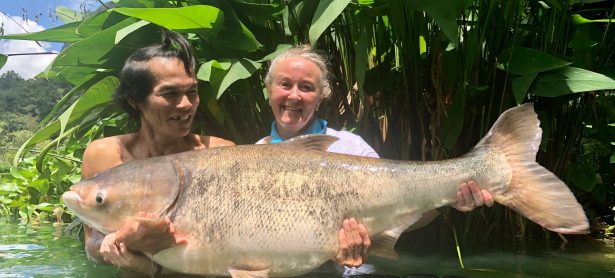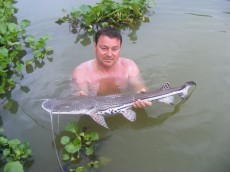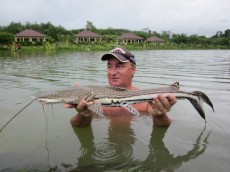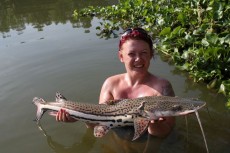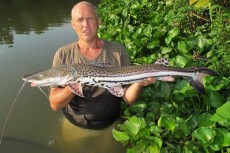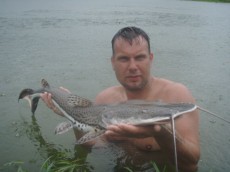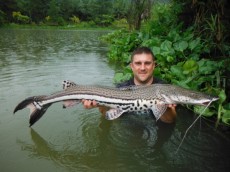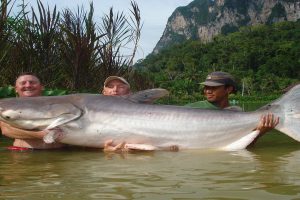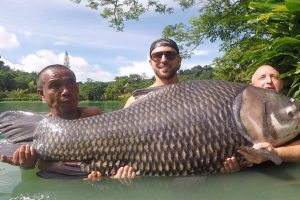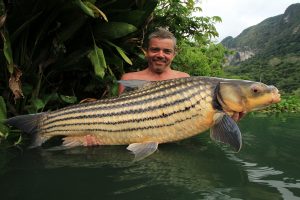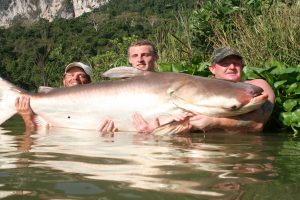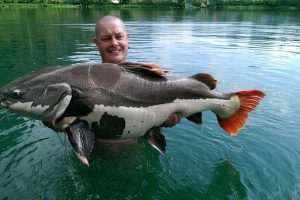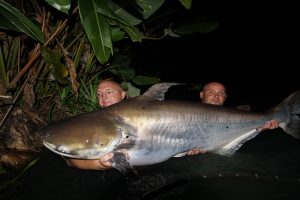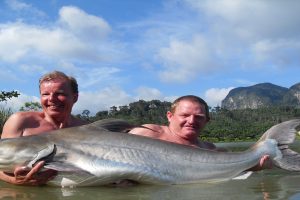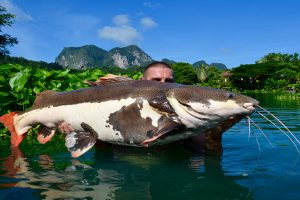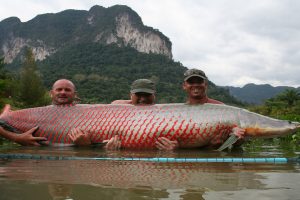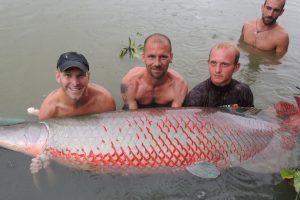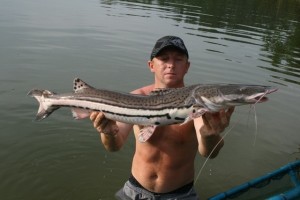 Name: Firewood catfish.
Name: Firewood catfish.
Other names: bagre, achacubo.
Species: Sorubimichthys planiceps.
Thai name: Pla planicip.
Max length: 1.5m.
Max weight: 50kg (110lb).
IGFA record: 16kg (35lbs 4oz.)
Diet: Shrimp, worm, molluscs, fish and squid.
To fish for our firewood catfish we recommend fishing with worms close to the hyacinth beds.In their home countries, fisherman use small fish or squid strips fished on the bottom. Fish close to weedbeds or other structures offering shelter, and apparently the best times to catch these fish is during the first two hours of darkness. Takes are slow, and the fish stay close to the margins; they fight hard, and for this reason must be given time to recover. As with all our catfish they will be injected by our guides then given time to recover before a quick picture and release. When handling these fish, be aware they have razor sharp pectoral fins, which can inflict a nasty cut, and for this reason we recommend you wrap your hands in a cloth or wear gloves. They do not possess teeth, as with most catfish; they just have tough pads in their mouths.
General facts on the firewood catfish:
Firewood catfish have a minor human use commercially; they are highly prized for the aquarium trade. Due to their poor eating qualities the native Indians dry them out and use the fish for firewood, hence its name! As with many species in Thailand they were introduced here for the aquarium trade. The firewood catfish is long and thin and has a depressed head that is usually three times longer than it is wide. They are characterized by a shovel like projecting jaw with a crushing pad rather than teeth, and they also have extremely long whiskers that face back down their body, with incredibly sharp pectoral fins. Their upper body is light brown with black spots and short black lines, while their bellies are cream with vivid black stripes and spots. The firewood catfish is native to South America in the Amazon and Orinoco river basins. These catfish will not breed in still water; they need flowing water over gravel, and their spawning times are set more by non-flood conditions than particular times of the year. They are not sexually mature until around 14 years old, making them a very vulnerable fish; hence they are listed on the endangered species list. Our fish were bred in captivity in Thailand for the aquarium trade.




